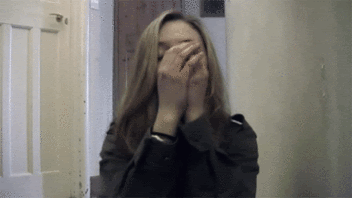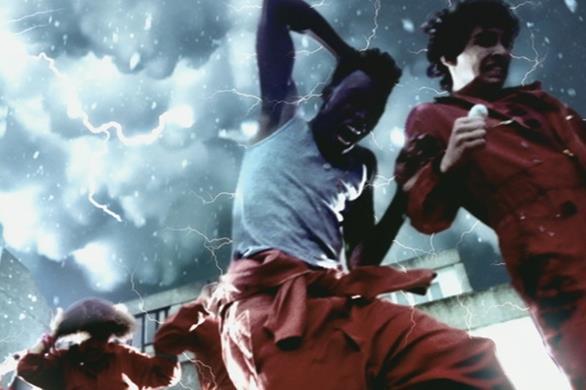"Mute- the 2011 Action/Drama starring Anjelica Barbe
Living in a speechless world where evolution has led humans to be born without voice boxes, Ava meets two rebellious boys who have somehow managed to keep their voices.
Together, immersed in a world of revolution and secrets, they flee the country to locate a team of rebel scientists developing their own manmade voiceboxes. The only thing they need is the DNA of a human who can speak, but the government is on the team's trail and what began as a journey of hope turns into one with only the tiniest chance of success, even if they do make it in time. A thrilling, fast-paced Action-Drama from Binary Studios™, Mute is far from the average rebellion story and certainly doesn't end in fairytale perfection, yet audiences are guaranteed to be glued to the screen from the first second to the last. "
1. In what ways does your media product use, develop or challenge forms and conventions of real media products?
a) Genre
The genre of our film was Action/Drama but as the pre-production process progressed we tried to incorporate elements of Sci-Fi to compliment the story's dystopian ideas, strongly picked up on by the focus group from our screening. Harnessing initial individual research into film openings we noticed often with Action/Drama films the characters and narrative is often established through a voiceover, as displayed here in the Spiderman opening sequence.
Moodboard showing a few of our Genre influences
The genre of our film was Action/Drama but as the pre-production process progressed we tried to incorporate elements of Sci-Fi to compliment the story's dystopian ideas, strongly picked up on by the focus group from our screening. Harnessing initial individual research into film openings we noticed often with Action/Drama films the characters and narrative is often established through a voiceover, as displayed here in the Spiderman opening sequence.
However, we decided to challenge this by not including a voiceover and setting up a very enigmatic sequence which raises a lot of questions to be answered by watching the fim, engaging our audience by providing them with cliffhangers and a reason to keep watching.
Sci-Fi films like Gattaca (Niccol, 1997) and Minority Report (Spielberg 2002) often feature uturistic mise-en-scene and a lot of technology, so we tried to include lots of electronic devices such as iPhones, iPads and XBox's to illustrate the themes of our movie. However, our film is set in present day London so it was not necessary for us to try and make it look radically different, the creepiness and USP of the sequence relies on the subtlety of the dystopia: everything LOOKS the same except people do not speak. To create authenticity and verisimilitude we shot our sequence in a typical middle-class, suburban area. This coupled with the ordinariness of Ava challenges the sterotype of typical action films with exotic locations and super-hero like main characters, making her journey all the more extraordinary.
b) Narrative structure
Although the film deals with an unusual idea, it has a fairly formulaic plot and we can easily apply Todorov’s theory of equilibrium to the opening sequence:
The rest of the film would illustrate her journey to reach a new equilibrium where everyone is able to speak. Here is a chart of the whole plot:
As action/drama films often have sequels (e.g The Batman Trilogy) or ambiguous endings, (e.g Inception) we decided to create another disruption at the end of the film: whilst the nation celebrates, we hear the government plotting to kill off Ava and Benjamin with the cover story that the voiceboxes are infected and everyone needs to have them removed.
Our film fits in with Propp’s character theory although we have challenged the traditional gender stereotypes of the 'princess' or 'damsel in distress' by having a headstrong lead female character. Our protagonist Ava is the heroine with the function of moving the narrative forward. Although he does not appear in the opening sequence, Benjamin’s friend serves as the victim tragically killed by the villainous government represented by the merciless guards who follow and try to kill them (like the collateral damage of agents in James Bond movies).
c) Form
The traditional form of an opening sequence introduces characters and plotlines conventionally or begins 'in medias res' the middle of the action, cutting back to an earlier date to show events leading to this point. We decided to go for a conventional approach for our sequence but ensured we made the audience aware of what the rest of the film might be about from the zoom on the webpage at the end. To establish Ava as the main character, we framed her shots so that she was nearly always central in composition and were stylistically inspired by director Aronofsky including a hand-held behind the head shot which helps put consumers in her position to feel closer to her in order to straight away establish a connection between audience and characters- breaking the 4th wall. We deliberately chose an actress with long blonde hair which is striking and would bring her out of the dull backgrounds.
Our film fits in with Propp’s character theory although we have challenged the traditional gender stereotypes of the 'princess' or 'damsel in distress' by having a headstrong lead female character. Our protagonist Ava is the heroine with the function of moving the narrative forward. Although he does not appear in the opening sequence, Benjamin’s friend serves as the victim tragically killed by the villainous government represented by the merciless guards who follow and try to kill them (like the collateral damage of agents in James Bond movies).
c) Form
The traditional form of an opening sequence introduces characters and plotlines conventionally or begins 'in medias res' the middle of the action, cutting back to an earlier date to show events leading to this point. We decided to go for a conventional approach for our sequence but ensured we made the audience aware of what the rest of the film might be about from the zoom on the webpage at the end. To establish Ava as the main character, we framed her shots so that she was nearly always central in composition and were stylistically inspired by director Aronofsky including a hand-held behind the head shot which helps put consumers in her position to feel closer to her in order to straight away establish a connection between audience and characters- breaking the 4th wall. We deliberately chose an actress with long blonde hair which is striking and would bring her out of the dull backgrounds.
Aronofsky's famous 'behind the head shots'
As we only had 2 minutes for our sequence, we placed our titles over the footage; only using black screens for the title and institutional information, similar to the opening titles of This Is England.
To keep to the conventions and form of an opening sequence we had to apply our knowledge of continuity. We did this by filming the same shots from different angles, with Anjelica staying as still as possible in between takes to make the action flow seamlessly. Although we had a variety of shots, we had take care not to break the 180 degree rule as this would be disruptive to the audience. In post-production we edited several clips together to create match-on-action shots such as this one:
We wanted to differentiate our film away from cookie-cutter Hollywood high concept blockbusters by creating a gritty, kitchen-sink, British visual style. From the initial stages of planning and pre production through to post, we kept referring to the TV asbo-superhero drama Misfits for inspiration for our cinematography and decided to replicate its low saturation and high contrast grading.
To make our sequence physically look like a film of Action/Drama/Sci-Fi genres, we spent a long time in post production colour grading to create a cinematic, dark and moody look and filmed the exterior shots at dusk in overcast weather for a low key lighting effect. Without replicating we took inspiration from films such as Shutter Island (Scorcese 2009) and recent release Limitless (Burger 2011), which use colour grading to particularly great effect with vibrant colours when the protagonist is under the influence of the drug and desaturated colouring when the effect is over.
Some attributes of our sequence were pretty conventional, for example, the choppy fast paced editing of the exterior shots and the loud thumping music, similar to the opening of Fight Club (Fincher 1999).
Some attributes of our sequence were pretty conventional, for example, the choppy fast paced editing of the exterior shots and the loud thumping music, similar to the opening of Fight Club (Fincher 1999).
We constantly included close ups to show the blankness and almost mechanicism of the characters in the film and in a sequence with no dialogue it was vital we kept the audiences attention by making sure everyone was always doing something. In moments of interaction (via text) we had to make sure our actors were very expressive e.g the exaggerated eye rolling and puzzled looks almost as a substitute for words, instead of telling, showing.
We chose a digital font for the title to anchor the film in technology and illuminate the sci-fi aspects.
The exterior shots in the first half are not real time but are instead choppy, jumpy, timed to music montage editing to establish the scene and create fast pace and enigma (harnessing Barthes enigma code).
Using our knowledge of Levi-Strauss’ theory we tried to create binary opposites throughout our sequence to make Ava stand out in this silent world. The establishing bus stop shot shows her sitting down, staring out pensively in contrast to everyone else standing, looking down and texting.
We also tried to create a contrast in noise from the loud music to the quiet diegetic sound of the house- the only noise in the sequence coming from escapist mediums e.g music and television. This was well received by our audience as many wrote on the feedback questionnaire that the absence of sound created an eerie atmosphere and kept them on edge. The pace of the film changes once she reaches home with longer pan and track shots as opposed to quick-cut close ups to reflect the normality and mundanity of her domestic situation.













No comments:
Post a Comment